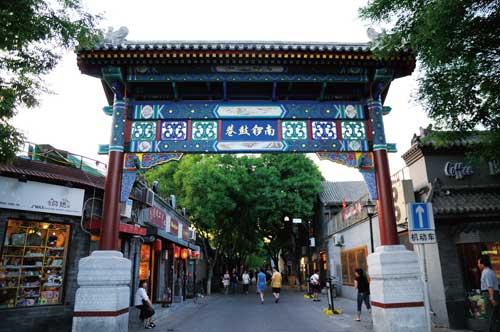Top 15 attractions in Beijing, China
- By Xu Lin
 0 Comment(s)
0 Comment(s) Print
Print E-mail China.org.cn, May 29, 2012
E-mail China.org.cn, May 29, 2012
Hutong(胡同)
|
Hutong [Beijing.cn] |
In the rich and historical culture of Beijing, the Hutong has a very special and important position. It is one of the most distinctive features and must-see attractions in Beijing.
The word hutong came from the Mongolian language about 700 years ago. According to research, it originates from the word hot-tog in Mongolian meaning "water well". Where there was a spring or well, there were residents. The word hottog became hutong after it was introduced into Beijing.
Hutong means lane and alley, smaller than a street. It is in fact the passage formed by lines of siheyuan where most Beijing residents live. One hutong connects with another, and siheyuan connects with siheyuan, to form a block, and blocks join with blocks to form the whole city.
There were 459 hutongs in the Ming Dynasty (1368-1644) and 978 hutongs in the Qing Dynasty (1644-1911). The present number is 1,316 in the urban and suburban districts of Beijing.
To get a better experience of the unique culture of ancient Beijing, you are suggested visit a few of Beijing's Hutongs. The famous ones include: Nanluoguxiang, Yandaixiejie, Mao'er Hutong and Guozijian Street.
Admission: Free
Also read: Top 10 most attractive hutongs in Beijing









Go to Forum >>0 Comment(s)